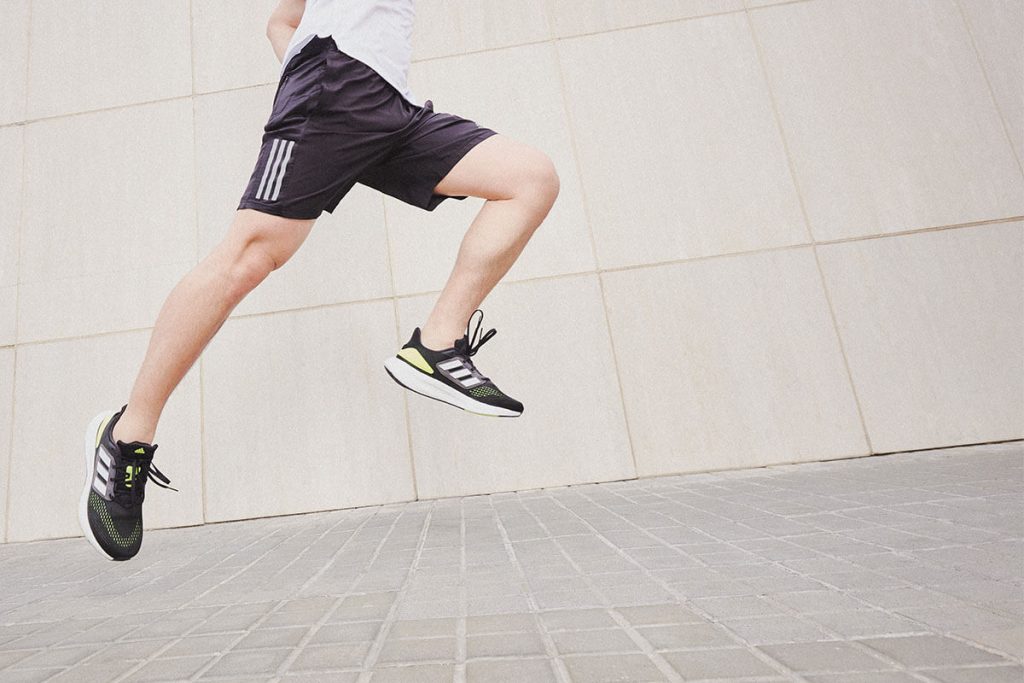Inner Knee Pain ► 6 Exercises for Pes Anserin Bursitis
Do you feel pain on the inner side of your knee? You may suffer from pes anserine bursitis, also called pes anserinus syndrome, medial or inner knee pain.
Here you can find answers to the most common questions on the problem and six helpful exercises for pain relief:
What is pes anserine bursitis (medial knee pain)?
The pes anserinus, also called “goose foot”, is where three tendons are conjoined on the inner side of the shin. It is a complex structure of tendons susceptible to injury. Located below the knee, it is the starting point of three muscles. These muscles are responsible for the inward rotation and bending of the knee joint.
The pain occurs on the inner side of the shinbone directly below the knee.
Pain develops from overexertion, friction, or trauma (e.g. direct hit) in the transition zone from muscles and tendons into the bone. There is also a bursa located here that can cause problems.
What causes inner knee pain?
Inner knee pain develops from overexertion, friction, or trauma (e.g. a direct hit) in the transition zone from muscles and tendons into the bone. There is also a bursa located here that can cause problems.
What causes overexertion or friction?
Pes anserinus syndrome is caused by walking for an extended period on uneven or sloped surfaces, muscular imbalances, worn-out running shoes, one-sided training, pelvic instability, or gait problems (knock knees).
What are the symptoms of medial knee pain?
The first symptom of medial knee pain is often initial pain at the beginning of a workout, which then fades. Later on, a lasting pain will develop along with a limited range of motion, swelling, and tenderness below the inner side of the knee. There may also be a crunching sound in the knee (also called crepitus).
What can you do as first aid?
If you feel inner knee pain and think you might suffer from pes anserine bursitis, it is important to cut back on your training. Resting and cooling the area (e.g. with an ice pack) is also helpful. If the pain goes away, you can continue low-impact active exercise with a full range of motion (cycling). It is also recommended that you replace your worn-out (running) shoes regularly.
Expert tip:
If you do not see any improvement after treating pes anserine bursitis yourself, you should definitely consult a doctor for an accurate diagnosis. Manipulative (fascial) therapy, leg axis training, ultrasound, anti-inflammatory medication, shockwave therapy, and knee injections can provide additional relief. Specialists may also be able to clarify other causes of the problems.
Pes Anserine Bursitis: 6 Effective Exercises for Inner Knee Pain
If you are in pain, the following six exercises can help. But please be aware:
If you do not see any improvement after treating the pes anserinus syndrome yourself, you should definitely consult a doctor for an accurate diagnosis. Manipulative (fascial) therapy, leg axis training, ultrasound, anti-inflammatory medication, shockwave therapy, and knee injections can provide additional relief. Specialists may also be able to clarify other causes of the problems.
Foam Rolling
1. Relaxation of the hamstrings

Sit on the floor with your legs extended in front of you. Place the foam roller under your hamstrings on the affected side. Lift your butt to shift the weight to your thigh. Use your upper body to help you move back and forth, rolling the foam along the length of your hamstrings. Make sure you roll very slowly. Do this exercise as many times as you are able.
2. Relaxation of the quadriceps

Get down on all fours. Stretch out the leg that has pain. Place the foam roller under your quad. Now roll it along the entire length of your thigh. Make sure you roll very slowly. Do this exercise as many times as you are able.
3. Foam Rolling Directly on the Pes Anserinus

Get on all fours. Lift the affected knee. Position the foam roller below the pes anserinus (the inner side of the shin directly below knee). Roll back and forth very slowly.
Caution:
This exercise can hurt – do not go beyond your pain threshold. Do this exercise as many times as you are able.
Stretching
1. Stretching the hamstrings

Get into the hurdle stretch. Extend the leg that hurts in front of you. Bend your upper body toward your foot. Keep your back straight. You should feel the stretch in your hamstrings. Hold this stretch for 60 to 90 seconds.
2. Stretching the quads

Lie on your side with the leg you want to stretch on top. Slightly bend the bottom leg to stabilize your pelvis. Grab the foot of your top leg and pull it toward your butt. You should feel the stretch in your quads (the front of your thigh). Be careful not to arch your back. Hold this stretch for 60 to 90 seconds.
3. Cobbler’s pose

Sit in cobbler’s pose. Bend your upper body forward. For an effective stretch, push your knees down toward the floor with your elbows. You should feel the stretch in your inner thighs. Be careful not to arch your back. Hold this stretch for 60 to 90 seconds.
Related articles:
***

